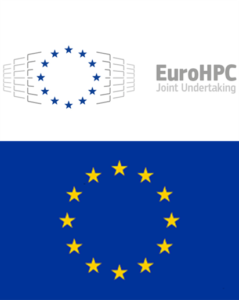High resolution weather forecasts are essential to many sectors, such as agriculture, shipping, aviation, civil protection etc. Climate change affects many weather extremes, such as heat waves, torrential rainfalls, flash floods, tropical cyclones, medicanes (Mediterranean Hurricanes) etc. Moreover, the need for improved early warning systems is vital as it can save lives and properties. Mobile phone alerts and weather apps cover even more remote regions. Furthermore, supercomputers and satellite technology contribute to even more accurate forecasts through the increase of the spatial resolution of weather models. As far as the agrifood sector is concerned, early warning systems play a major role, as the clients/farmers can take measures fast against an extreme weather event and modify their crop/water management according to successfully predicted weather conditions. NEUROPUBLIC (NP) has developed through gaiasense (https://www.gaiasense.gr/) an early warning system concerning weather extremes such as frosts, heavy rainfalls and heatwaves that can be detrimental to the crops. The above warnings are personalized and give the opportunity to the clients/farmers to take the appropriate measures. Within the ACROSS project NP downscales IFS data originating from ECMWF to cloud resolving scales (e.g. up to 1km) using the pre-exascale supercomputer infrastructure of CINECA (GALlLEO 100/G100). The downscaling up to 1 km provides very accurate forecasts of temperature profiles especially concerning heat waves and frosts, which are significantly detrimental to the crops. Furthermore, the forecasted precipitation becomes very accurate at this resolution allowing accurate, reliable and personalized early warning hazards to the farmers. Additionally, the data assimilation of NP’s agrometeorological stations (called gaiatrons), improves the forecasting skill of the model as it adapts it to the appropriate farming necessities. As speed plays a major role concerning the forecasts on cloud resolving scales, preliminary tests show that 84h forecasts can be executed in less than 4h (Figure 1).

Figure 2 shows a comparison of an improved forecast (1km resolution) of heavy rainfalls (Fig. 2a) against a forecast of a coarser resolution (4 km) (Fig. 2b). More specifically, an incident of torrential rainfall occurred over Imathia region (red circle) on 12 June, 2021. Fig. 2a shows a significantly more accurate precipitation forecast in comparison to Fig. 2b. The high rainfall heights can be also verified by the gaiatrons’ observations concerning the abovementioned region (Figure 3).


Figure 2: Precipitation pattern (a) of 1 km resolution and (b) of 4 km resolution, on 12 June 2021



